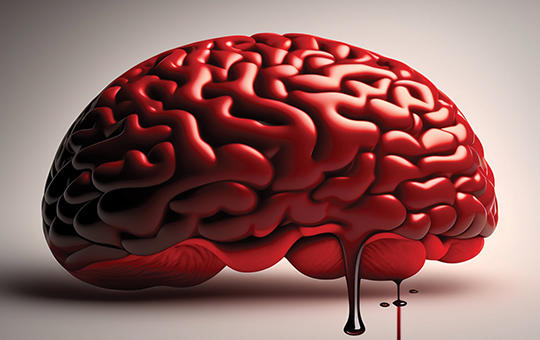The eLitMed.hu medical portal uses computer cookies for convenient operation. Detailed information can be found in the Cookie-policy.
Lege Artis Medicinae - 2024;34(7-8)
Content
[Significance, screening, and effective treatment of lysosomal acid lipase deficiency ]
[Lysosomal acid lipase deficiency is a rare lysosomal storage disease with an autosomal recessive inheritance pattern, characterized by altered lipid metabolism and the involvement of several organs, including the liver and the gastrointestinal tract. The cause of the disease is a homozygous or compound heterozygous mutation of the LIPA gene, resulting in significantly reduced activity of the lysosomal acid lipase enzyme encoded by the gene. The severe form that appears in infants is called Wolman’s disease, while the milder, late-onset form is also mentioned as cholesterol-ester storage disease. Wolman's disease has a poor prognosis due to liver failure, severe malabsorption, and adrenal insufficiency. The late onset form of the disease causes mainly fatty liver and lead to gastrointestinal and cardiovascular complications. The diagnostics of the disease the dried blood spot test measuring the enzyme activity has a particular importance, but it should be confirmed by genetic testing of the LIPA gene. The treatment is currently based on human recombinant enzyme replacement therapy (sebelipase alfa), which is now also available in Hungary. Although the disease is rare, early detection and modern, targeted treatment may improve the life expectancy and quality of life of patients.]
[Randomized controlled clinical trials IN non-traumatic intracerebral hemorrhage ]
[Efficacy and safety of any therapeutic intervention can be most reliably evaluated by randomized controlled clinical trials. The overwhelming majority of therapeutic stroke trials included patients with ischemic stroke, whereas only few trials focused on non-traumatic intracerebral hemorrhage. Up to 2023 none of the randomized trials in intracerebral hemorrhage could prove a statistically significant treatment effect on clinical endpoints. The breakthrough was in 2023 when both a surgical trial and a trial on a medical approach found statistically significantly better outcomes compared to the control groups. Currently the following interventions are evaluated in randomized clinical trials: surgical interventions (removal of blood, decompressive craniotomy, analyzing specific surgical techniques), minimizing bleeding (blood pressure reduction, activated coagulation factor VII, tranexamic acid), decreasing perifocal edema (osmotic agents, anti-inflammatory medications), protection of the brain tissue around the bleeding (neuroprotection), and preventing complications. A separate group of trials evaluates the preventive strategy following intracerebral hemorrhage in patients on anticoagulant therapy. We give an overview of the former trials on intracerebral hemorrhage in the MEDLINE and the Cochrane databases, and of the currently ongoing randomized clinical trials in the ClinicalTrials.gov database of the National Institutes of Health, National Library of Medicine, and the European clinicaltrialsregister.eu databases. ]
[Epilepsy in women – Part 2 ]
[60-70% of people with epilepsy live seizure free life – with drug therapy –, therefore family planning, childbearing has become an important aspect of everyday care. As half of the pregnancies are unplanned, preparing a woman with epilepsy for childbearing in time is a very important task. During the preparation the possible fertility problems are concerned based on a gynaecological examination firstly, then the appropriate antiepileptic drug therapy (AE) is selected, preferably in monotherapy, in the lowest dose to achieve adequate seizure control and the individual vitamin supplementation is determined. Valproate has consistently been associated with the highest percentage of severe congenital anomalies – which can be screened by special ultrasound – and a slight decrease in foetal IQ. Neither epilepsy nor the use of anti-epileptic drugs is usually an indication for caesarean section. For most antiepileptic drugs, antiepileptic levels should be monitored several times. For women whose antiepileptic drug dose has been increased during pregnancy, a reduction plan should be made for the first weeks for the 1-3 weeks of postpartum period. The postpartum dose may be slightly higher than before pregnancy. Breastfeeding is safe for most women taking antiepileptic drugs.]
[The mechanisms of targeted pharmacological inhibition of immunopathological processes ]
[The pathology and clinical presentation of inflammatory rheumatic diseases at tissue and organ level are determined by the signalling of cytokines and their receptors on the cells involved. The cells of the immune system are essentially differentiated to eliminate pathogens and decomposed self structures. The cytokine-driven signalling/ transduction structure is networked. The induction of the signalling complex may result uncontrolled tissue damage. Some of the cytokines are differentiating, physiological, growth factors, while the protective cytokines excite pro-inflammatory, autoaggressive mediator and effector molecules. Increasing insights into pathological mechanisms are revealing therapeutic targets where these processes can be effectively inhibited. The physicochemical properties of key molecules are enabling the planned development of targeted therapeutics using artificial intelligence. Targeted therapeutics are biological response modifiers, or biologics for short. They are genetically engineered anticytokine macromolecules or small molecule enzyme inhibitors that act as passive vaccines. Targeted therapy is thus a practical example of translational medicine, i.e. the direct application of the results of scientific research to a therapeutic end. This paper aims to illustrate this network and therapeutic endeavour.]
[Association of diastolic blood pressure with cardiovascular diseases ]
[Not only high systolic and diastolic blood pressure, but also excessively low diastolic blood pressure is associated with cardiovascular and renal disease. Over a long period of time in hypertensive patients diastolic pressure of 70-79 mm Hg was generally considered optimal between the ages of 18-65, the optimal value was <80 mm Hg or <90 mm Hg at older ages (over 65 years), according to various guidelines. There is a persistent view that at any age, diastolic blood pressure below 70 mm Hg, and even more below 65 mm Hg, is associated with a higher incidence of complications and worse disease outcomes compared with the average (optimal) value. Diastolic pressures both below and above the "optimal value" are considered to have adverse effects, and the relationship between excessively low diastolic blood pressure and cardiovascular and renal events is described as a J- or U-shape. To date, no clinical trials have been conducted with the main objective of determining a truly optimal diastolic blood pressure for cardiovascular and renal outcomes. In the absence of this, an important question is whether there is a J- or U-shaped relationship, is low diastolic blood pressure a cause or a consequence of cardiovascular and renal diseases and their associated conditions? In this review, we aim to answer this question and also to answer whether low diastolic blood pressure, either initially or during treatment, may hinder the effectiveness of antihypertensive treatment in reducing cardiovascular and renal morbidity and mortality.]
1.
Clinical Neuroscience
Is there any difference in mortality rates of atrial fibrillation detected before or after ischemic stroke?2.
Clinical Neuroscience
Factors influencing the level of stigma in Parkinson’s disease in western Turkey3.
Clinical Neuroscience
Neuropathic pain and mood disorders in earthquake survivors with peripheral nerve injuries4.
Journal of Nursing Theory and Practice
[Correlations of Sarcopenia, Frailty, Falls and Social Isolation – A Literature Review in the Light of Swedish Statistics]5.
Clinical Neuroscience
[Comparison of pain intensity measurements among patients with low-back pain]1.
2.
Clinical Neuroscience Proceedings
[A Magyar Stroke Társaság XVIII. Kongresszusa és a Magyar Neuroszonológiai Társaság XV. Konferenciája. Absztraktfüzet]3.
4.
Journal of Nursing Theory and Practice
[A selection of the entries submitted to the literary contest "Honorable mission: the joys and challenges of our profession" ]5.
Journal of Nursing Theory and Practice
[End of Life and Palliative Care of Newborns in the Nursing Context]
















